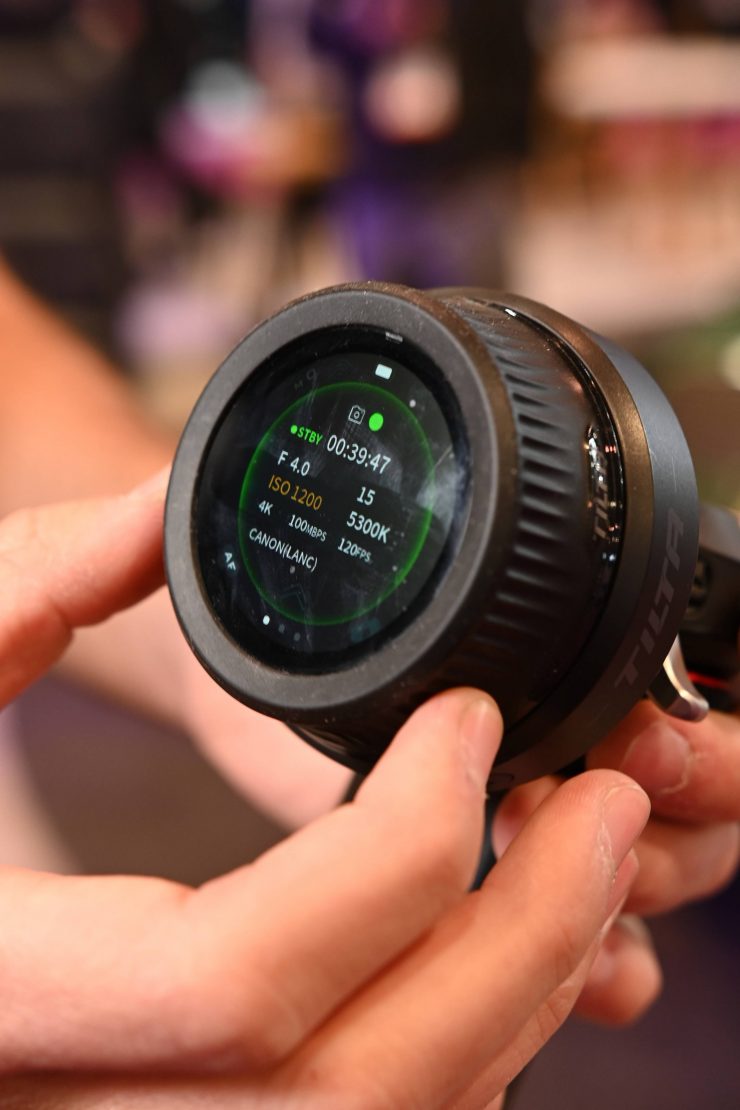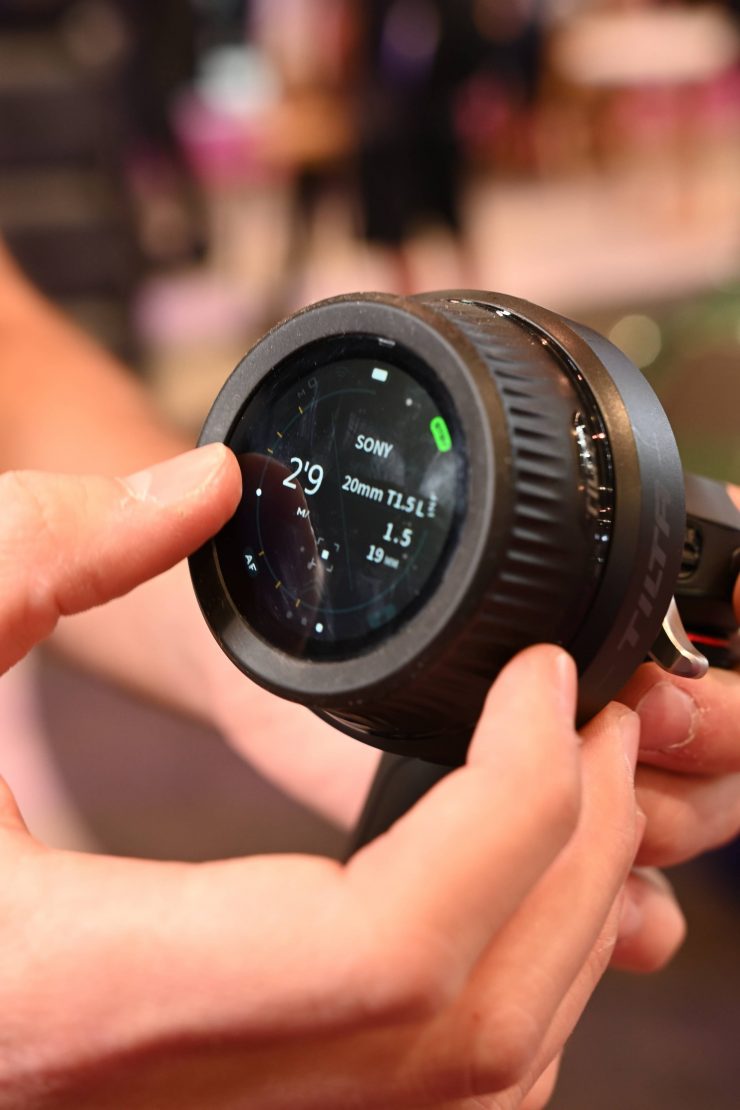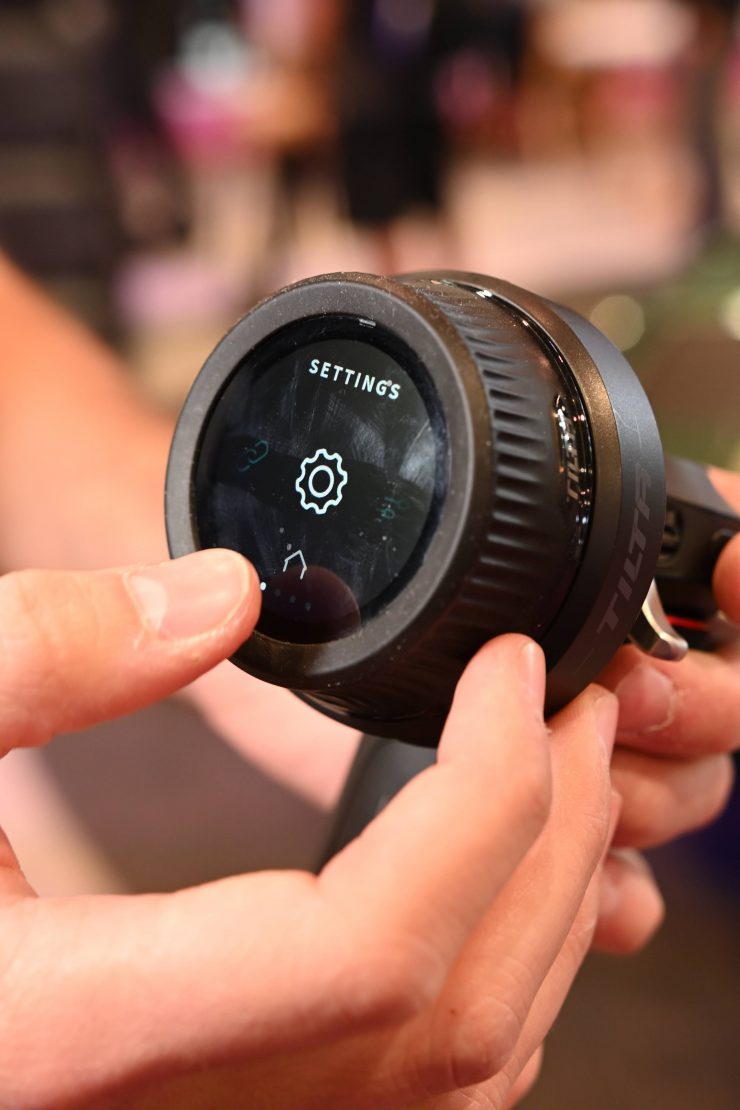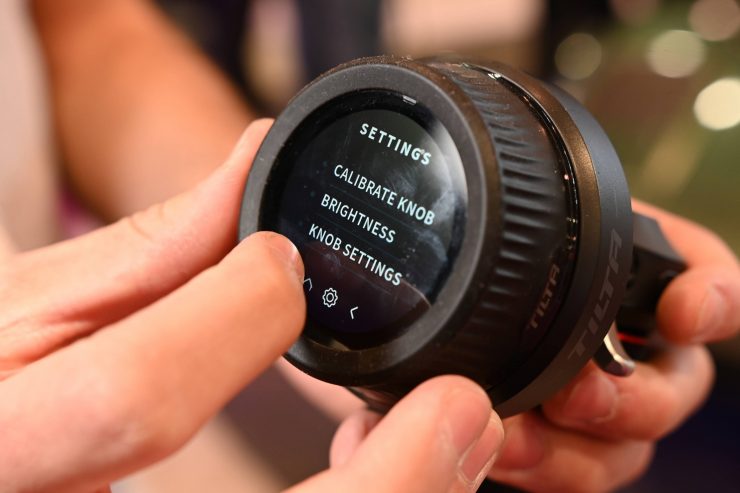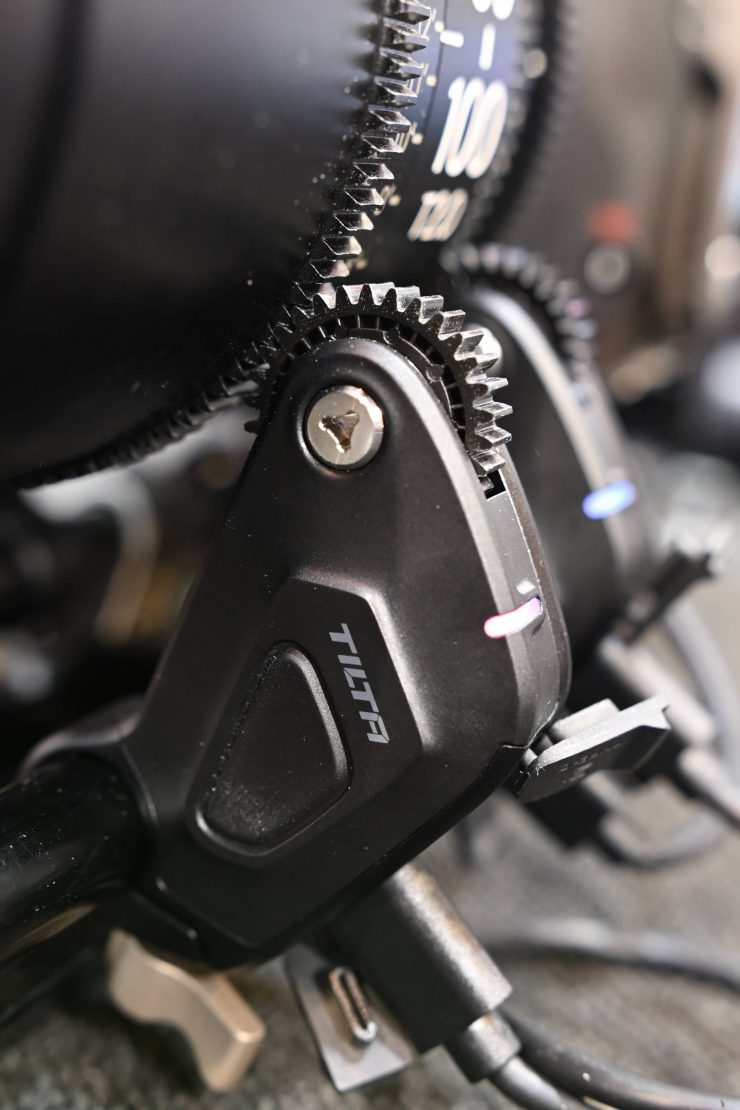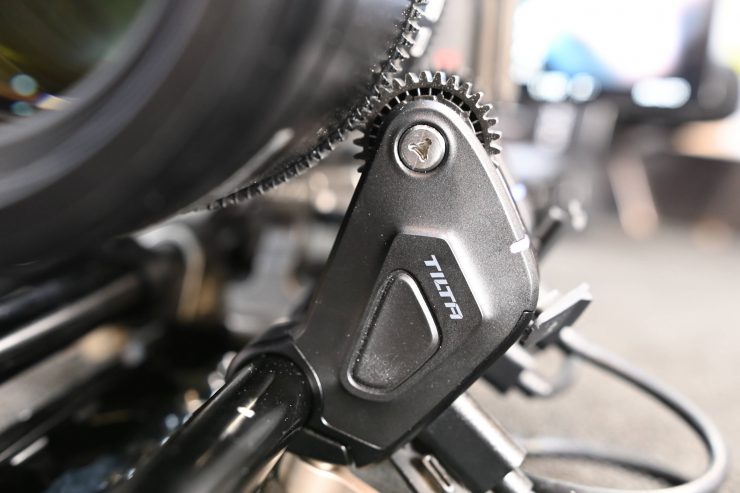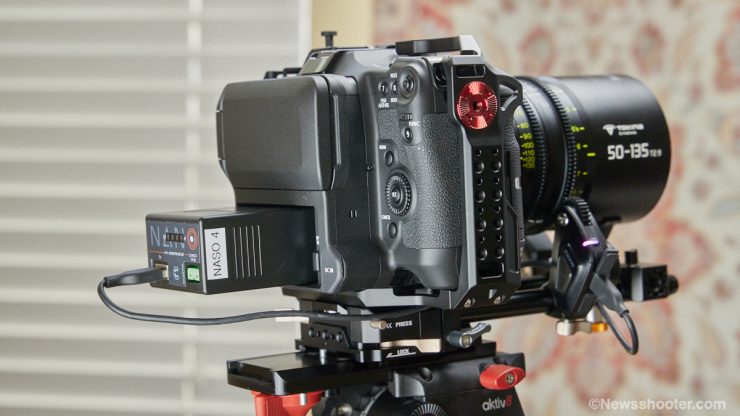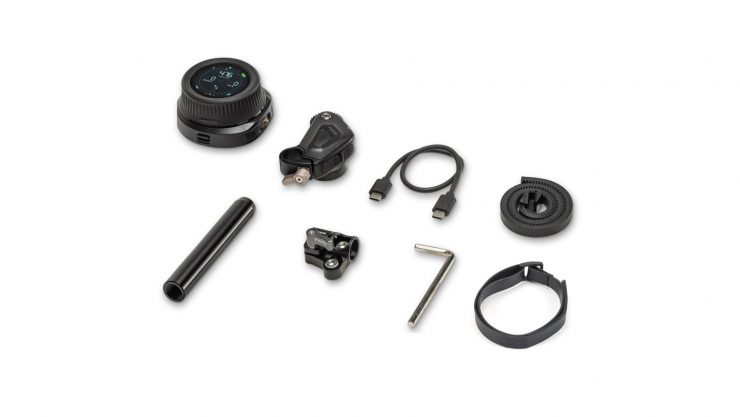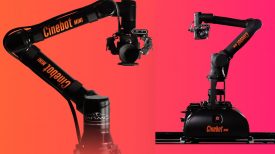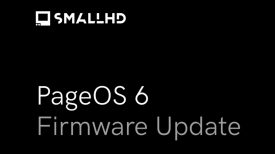
The Nucleus Nano II is the follow-up to the original Nano. The first Nucleus follow focus system, which was announced in 2013, was arguably the first affordable wireless follow focus system that allowed anyone from entry-level users up to seasoned professionals to remotely control focus/iris/zoom without needing to spend a ton of money. The Nano did very well for Tilta, selling more than 300,000 Nucleus-M and Nucleus-Nano units since the system was first launched. Impressive!
The Nucleus Nano II is a big step up from the original Nano. This is Tilta’s next-generation product that brings professional gear within reach of more filmmakers. It features a new intuitive touch screen, a high-torque motor, a long-lasting battery, and multi-channel communication. It is also compatible with other Tilta devices and DJI gimbals, making it a versatile product that can be used in various ways.
All-in-One Control: Camera, Gimbal, & Motor
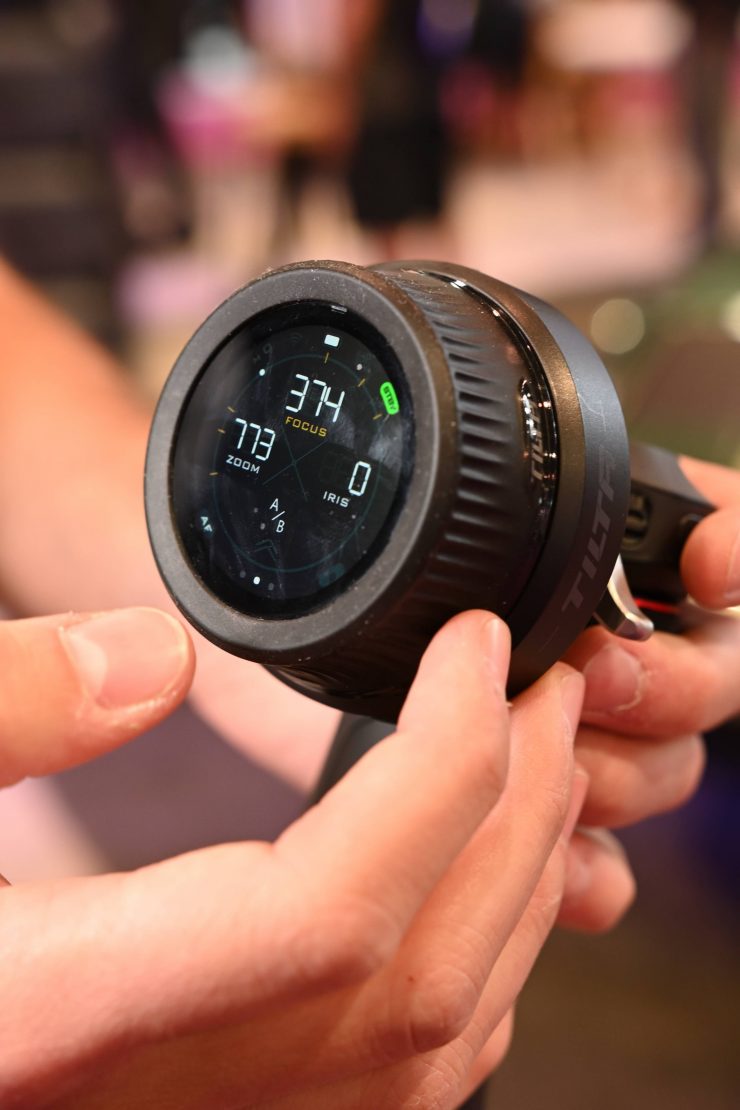
The Nucleus Nano II can be used with several other devices, such as DJI Ronan gimbal and camera control with select models. It can also work with the Tilta Mirrage motorized ND filter matte box. It truly is a product that tries hard to do as much as possible, and it’s crazy to think it only costs $299 for the basic kit. On release, it has some growing pains when it comes to camera control, but it works well with the Tilta Mirrage Matte Box, as all you do is select the motor in the FIZ menu.
Camera control functionality depends on what camera you are using. The Nano II communicates with cameras via a direct connection from the motor USB-C to the camera. What parameters you can control depends on the camera you are using. Certain Blackmagic, Canon, ARRI, and Sony cameras will have control options, and more will be added, if possible, via firmware update.
Look and Feel
When I opened the box and got my hands on the Nucleus Nano II FIZ, I was impressed by the feel of the unit. It’s solid without being heavy, and the FIZ wheel is buttery smooth but does have some issues.
The motor is tiny. Tilta states it’s much more powerful than the original, and they kept it so compact. It’s impressive.
The display on the FIZ is bright and crisp, plus well-organized. Swiping is the main way to get to different menu options. Swipe up, and you can access the main menu. Here, you have all the settings options for the system, including the motor.
The brightness is pretty good indoors. You can adjust the brightness in the Settings. Its default is 50%. On a dim set, the ability to turn it down is a nice option, so the FIZ isn’t distracting. For outdoors, I would crank it up all the way. One downside of LCD screens is they are reflective. I don’t feel the FIZ is designed for full sun, but it is usable. In the shade, it works well.
Internal Rechargeable Battery
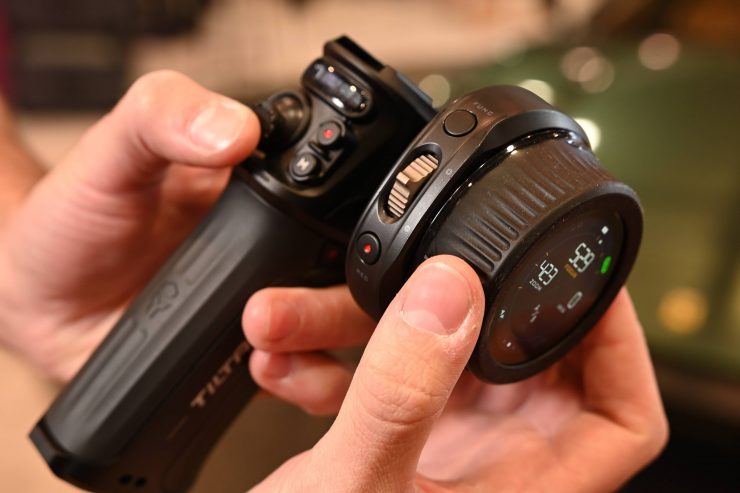
The Nucleus Nano II has an internal rechargeable 3.7V 1800mAh 6.66Wh battery. Tilta states the battery will last for twenty hours. This is not a test I can perform. However, I tested it by picking it up and spinning a lens while I was at my desk writing and working for over five hours, and the battery dropped approximately 50%. Yeah, that was one fun test!

In the real world, the operational time will be approximately 9 hours, so it should get you through a whole day. It supports PD Fast Charging and can be charged while in use.
You can charge and power the Nucleus Nano II through the USB-C input or attach it to a hand grip that takes a small Sony NP-F550 battery that will also power and charge the Nucleus Nano II. When charging the FIZ while it’s powered down, no indicators show if the FIZ is charging. This might be due to the early firmware version. Unfortunately, you have to power the FIZ on to see if it’s fully charged.
To save battery life, a STANDBY mode can be activated. You can set it to go to sleep when not in use after 15, 30, or 60 seconds. To wake it up, you tap on the LCD screen.
Not having changeable batteries will disappoint some people who like swapping out batteries instead of charging the unit. I do feel the internal battery lasts plenty long, and PD Fast Charging is a big plus.
FIZ Interactive Touchscreen Control
The interactive touchscreen control was designed to offer easy access to settings with just a swipe. Swipe up, and you are in the main menu. Swipe left and right to find the function you want to change. The Tilta overview video above is well done and worth watching as he goes through all the basic settings.

Tap on the icon of the function, such as MOTOR. You now select the specific item and tap on the name. It’s straightforward to navigate. When done, tap the home icon to return to the main user interface.
The display is nice and bright with good detail. The touch screen is responsive even with the tiny icons like the lock screen option.
Powerful Motors
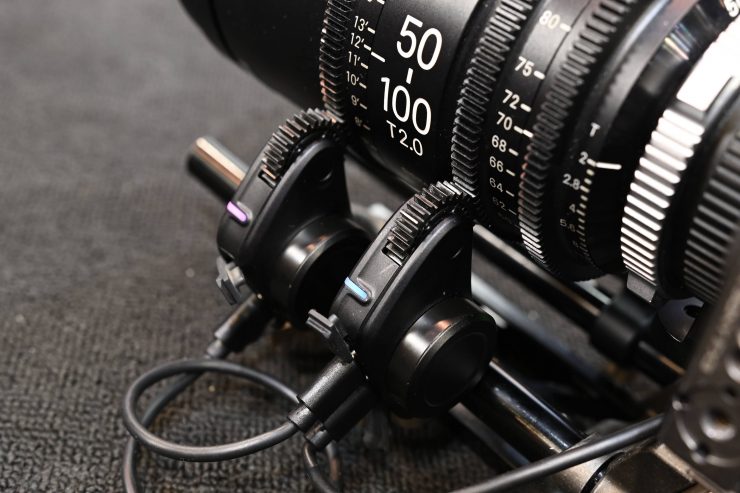
Tilta states the new motor design of the Nucleus Nano II has 5x more torque than the original Nucleus Nano. They feature an auto-adjustable torque design and a high-efficiency cooling system.
I’ve been testing the system with the Tokina 50-135mm Cinema Zoom, and the motors are performing well without issue. My only issue was that the zoom and focus on the Tokina lens were too close, so I had to put a motor on each side of the lens. Oh, the torture! 
Overall, I’m impressed with these Nano II motors. They are so small and can handle an actual cinema lens with ease. I didn’t have any overheating issues in an average climate.
Powering the Motor

The motor needs to be powered externally. It would be great to have an internal battery; however, it requires a lot more power than the space it has. If a removable battery were an option, the motor would easily be three times larger, defeating the “Nano” name.
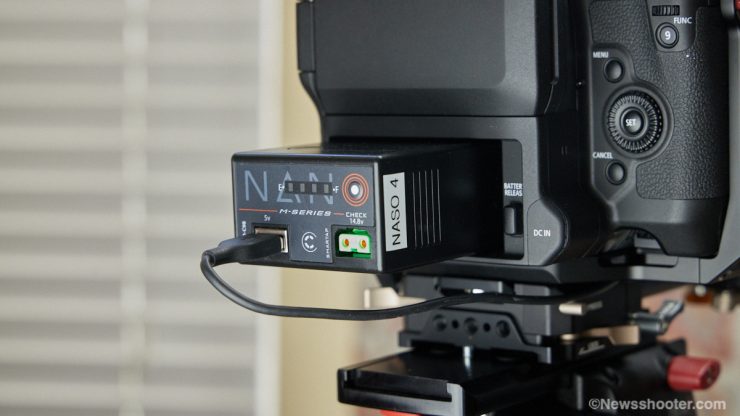
Fortunately, many camera batteries have a USB power tap on them that can be used to power the motor. For example, the Canon C70 can use the Core SWX NANO-C98 14.8V Battery. It has a D-TAP and USB. Nice!
I would get some angled USB-C cables to keep things a bit cleaner so the cable connector isn’t sticking out as much.
Tilta has a few other powering options with battery mounts if you don’t have access to external sources. They also recommend a PD Power Bank to ensure the motors get plenty of juice, but I’ve been using the Core SWX battery without issue pushing two motors.
Speaking of using two motors… You can daisy chain another motor by using PORT 1 on the main motor that is getting external power from PORT 2 to PORT 1 on the second motor. Make sure they are both paired and calibrated. The motor LED light should be a solid color and not blinking.
Calibrating The System

Something to remember when calibrating the lens with the system is that the FIZ needs to be in either full left or full right rotation before calibrating the motor. If it is set in between, it won’t calibrate correctly.
Calibrating cine lenses or Lenses with hard stops
- Turn the FIZ all the way to the left or right.
- Turn the motor on and long press the button on the motor, or use the FIZ FUNC button by long pressing and tapping on the motor type you are using, such as Focus or Zoom.
- Calibration starts, and the motor goes to the hard stop on the lens. Stops. Then, it rotates in the other direction until it hits the other hard stop.
- The lens will return to the setting, either infinity full right or full left, with the longest focus length.
Calibrating lenses without hard stops

The process is very simple. In the main FIZ menu under MOTOR, you choose to calibrate manually. Follow the instructions on the FIZ. It can’t get any easier than that!

Take the lens to macro or closest focus point. Tap Confirm.
Using the FIZ, rotate the focus to infinity or the farthest focus position. Dont go past it. Go slow. When you find the end, tap confirm. Done!
When the system is powered down, it will save the last calibration, so if you don’t change the lens, it will be ready to go.

Custom Lens Data

In a future update, the Nucleus Nano II will be able to download and input lens data. You will be able to recall them and choose to use those specific lenses. The distance and f-stop will appear on the controller. This looks like a cool feature, and I’m looking forward to it being released.
Focus Wheel And Rocker
You have two options on the FIZ to control the motor: the Main FIZ Wheel and a side Rocker. For critical shots that require a slow push on a zoom lens or subtle focus changes, the FIZ Wheel is the better option, as it has much more control. The rocker doesn’t have a smooth finish at the end, while the wheel lets you ease in and out much better.
When the FIZ is powered off, the wheel is silky smooth. The feel changes and becomes a bit tighter once it’s turned on and controlling the motor.
It takes some practice to get a good feel, and then I got nice, smooth pulls. You can get nice slow pushes and pulls when using the motor on the zoom with a Cinema Zoom lens. Don’t try this with the rocker as it doesn’t have the ease in and out touch.
Overall, I like the FIZ wheel a lot. The rocker is okay, but it has a more mechanical feel, and I would be hard-pressed to use it for anything creative, More so to push in focus and set a shot. I used the main FIZ wheel if I needed a slow fluid push.
Setting Stops and Markers
The FIZ can be set with markers or stops if you are doing a repeatable move. I like that it is easy to do all from the main FIZ screen.
To set a marker, set the first point, then tap on the A/B icon on the touchscreen. This puts the first mark. You can add several by rotating the wheel and tapping on the A/B each time.
To create a hard stop that will restrict the full rotation to two marks. Set the first point and long press the A/B icon. The FIZ will vibrate. Now, move to the second point and tap the A/B. Done. Now, you have a tighter field for more precision with hard stops. To clear the settings, long press the A/B icon.
I like this functionality a lot. It’s simple to use with the least menu navigation to accomplish this setting.
Multi-Channel Communication for Up to 4 Motors
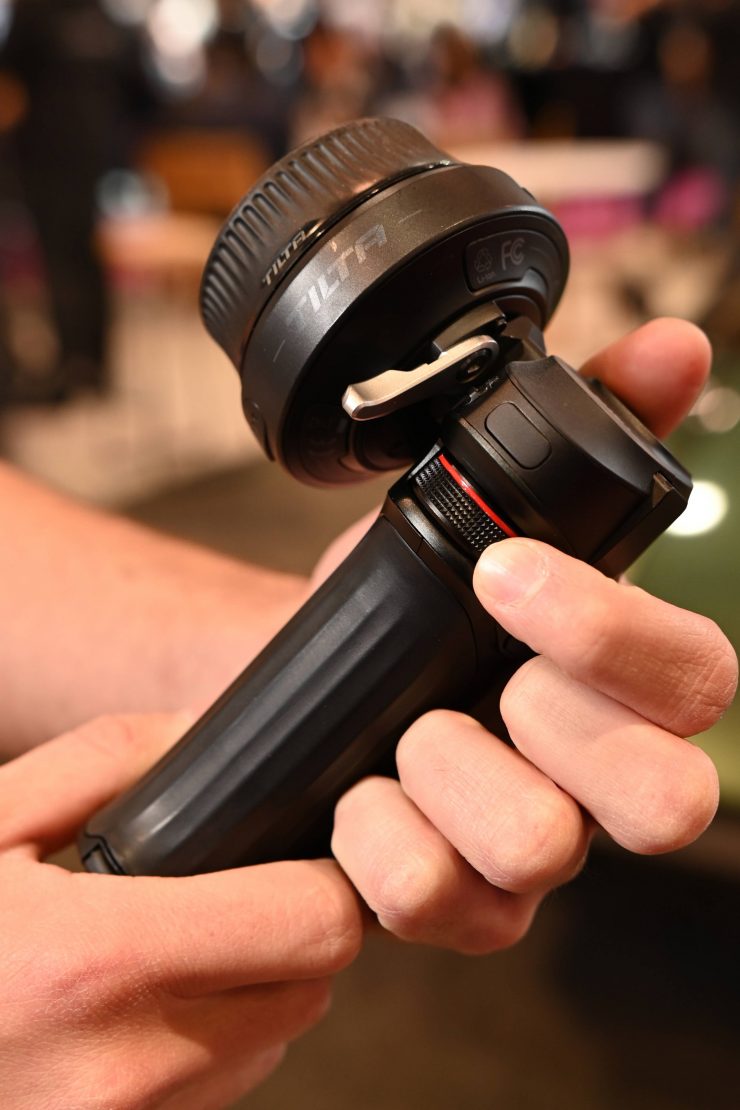
The Nucleus Nano II combines camera control, gimbal control, and motor control into a single unit, and it also features multi-channel communication for controlling up to 4 motors. This allows the user to adjust focus, iris, zoom, and another axis, such as a geared variable ND filter. The Tilta Mirage Motorized VND can also be used by assigning the motor to a Control Handle.
Control Handle

The Control Handle is a nice accessory as it can power and charge the FIZ, but it gives you a better way to hold the Nucleus Nano II. If you’re pulling focus for long periods, having the FIZ in the palm of your hand can be tiring. The grip on the handle is wide enough to hold comfortably.
There are two options, but don’t get too excited as both are unavailable as of writing this review.
One without any motor control. This is primarily for powering the FIZ controller and giving you much more run time with the NP-50 type battery that goes into the bottom of the grip. It also has a DC out and two USB-C ports.
The second version is more advanced. It can control two more motors—a front wheel and a thumb joystick. The joystick has to be set using the Control Handle menu system. With this Control Handle, you can control four motors.
Compatibility with Other Tilta Wireless Control Systems

The Nucleus Nano II is compatible with other Tilta wireless control systems such as the original Nano, Nucleus-M, Mirage VND motor, etc.
Works with DJI Gimbals
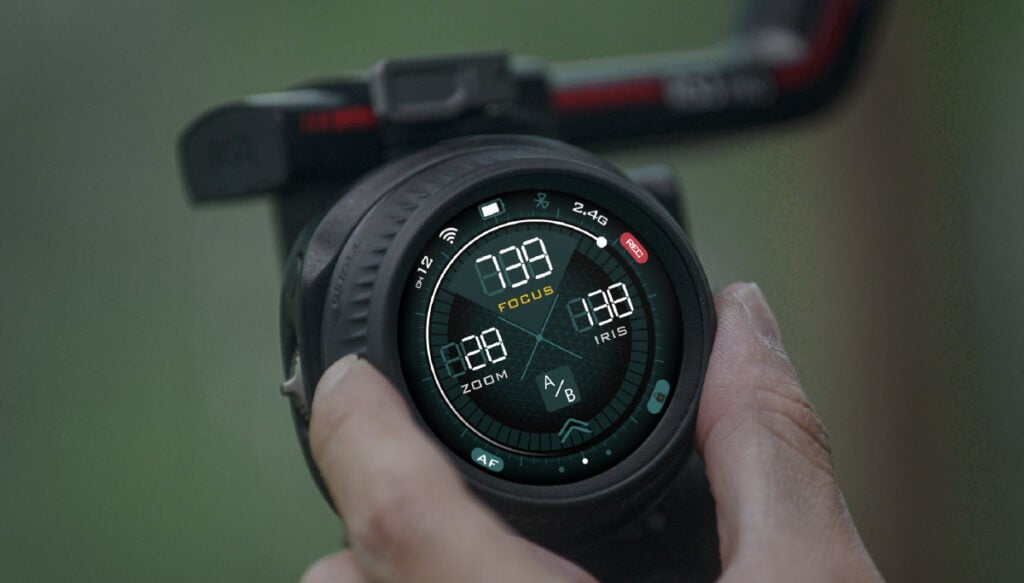
The Nucleus Nano II looks to be a good companion for DJI gimbals. It supports control and communication and is compatible with RS2 & RS3 Pro gimbals. (The current firmware is not fully functional. More options will be added in a future update)
Camera Control
With the Fizz, you can control camera features such as ISO and Aperture. This feature isn’t fully functional yet. The plan is to have several makes and models added in the future.
Camera control makes it convenient if the camera is on a gimbal. To connect to a compatible camera, you go through the Nucleus Nano II motor via USB-C and select the camera in the Fiz menu. With the current firmware, camera control is not ready but will be in a future update.
Conclusion
The Tilta Nucleus Nano II is a major upgrade to the original Nano. Its slick FIZ and menu functions make changing settings and operating the system easy. The motors can pull focus and zoom with a Cinema Zoom lens very well, and stills lenses are easy to calibrate manually. I didn’t find any latency issues or communication problems. It seems to be a very stable system.
If you are a DJI Ronin user, you can integrate the Nucleus Nano II for even more flexibility. While not every feature is fully functional in the prerelease version, I can see where it’s going and where it will be. I have to remind myself it’s a $299 product, and at that price, it’s delivering a lot for the money. Did I mention it’s only $299? That price is mind-blowing!
Is it worth upgrading, too? I think so, as the basic kit is only $299. The motors are much stronger, and its overall user experience is very good. The LCD screen is clear and easy to navigate. Much better than the original.
Worth mentioning several features are not activated on the early-release firmware. The current firmware as of 9/1/2023 fully supports all controls for the BMPCC 4K, 6K, 6K Pro.
The firmware partially supports Sony FX3, A7S3, A7R5, ZV-E1, ZV-E10, and Canon R7 for settings such as Run/Stop, Shutter Speed, ISO, and Iris.
Run Stop is currently supported for camera systems including all mentioned above, as well as Sony A7C, A7M4, A7R3, Canon R6M1, Panasonic S1H, GH6, and S5M2 via an optional Advanced Side Handle Run/Stop Cable. More cameras and functionality will be added via regular firmware updates.
This is a bit of a bummer, but Tilta is throwing so much at the Nano II at this impressive low price point I’m going to give them the benefit of the doubt on the promised features. However, as it is today, it’s a terrific bargain indeed for what it can do on release.
Price & Availability
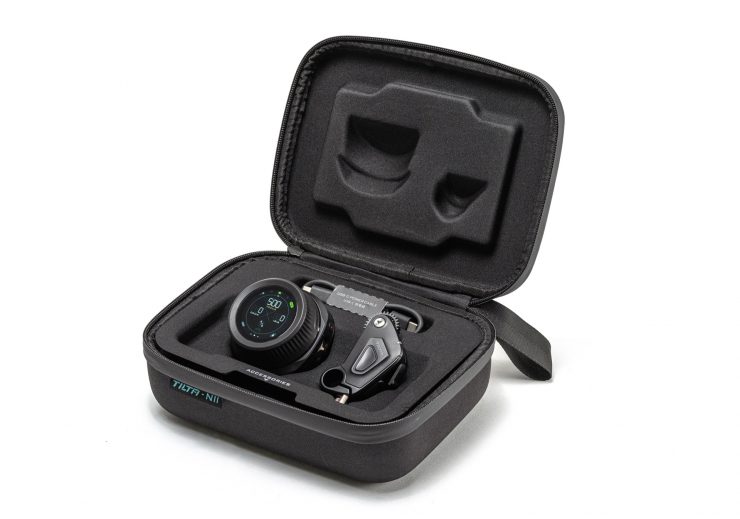
The basic Nucleus Nano II retails for $299 USD and is shipping now. You get the controller and a single motor, plus the accessories listed below.
- Tilta Nucleus-Nano II FIZ Wireless Lens Control System
- Nucleus Nano II Handwheel Controller
- Tilta Nucleus Nano II FIZ Lens Control Motor Kit
- USB-C Power Cable (11.8″)
- Lens Ring Adapter
- 15mm Rod (4″)
- 15mm Rod Clamp Adapter with 1/4″-20 Screws
- Allen Key
- Carrying Case
- Limited 1-Year Manufacturer Warranty (Electrical)
- Limited 2-Year Manufacturer Warranty (Mechanical)
A single Tilta Nucleus Nano II FIZ Lens Control Motor Kit retails for $119 USD. The Nucleus Nano II Handwheel Controller is also available and retails for $169 USD. Kits with two or three motors will cost around $700 USD. The hand grips are currently not available, and pricing hasn’t been announced.

